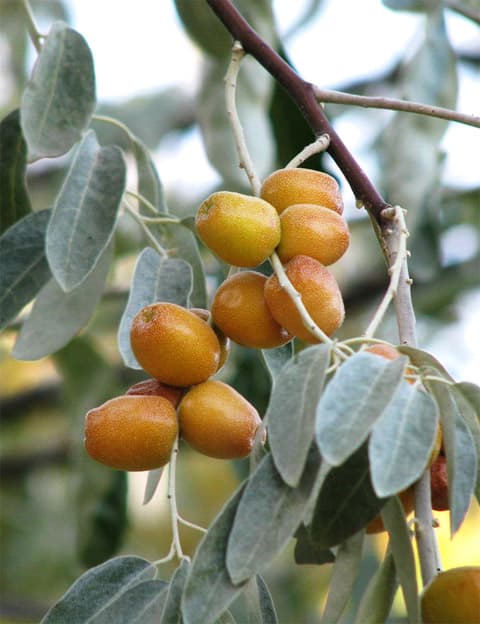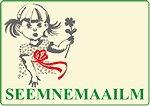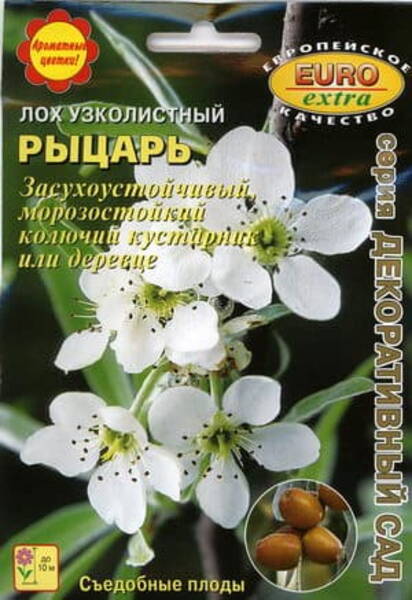Deciduous shrub with a spreading crown, up to 10 m high, with red-brown shiny bark and thorns, the length of which reaches 3 cm. The trunk is curved.
The flowers are very fragrant, orange-yellow inside and silvery outside. The flowering period is 15-20 days. The fruit is a drupe, round-elliptical, up to 1 cm, initially silvery-white, when ripe - yellowish-brown, with a sweetish, starchy, edible pericarp.
Grows quickly (especially at a young age). Photophilous, drought-resistant, has a deep root system, perfectly withstands smoke and air pollution.
The plant is quite frost-resistant (sometimes only the ends of the shoots freeze). It tolerates pruning well, when pruned at ground level it gives abundant shoots, which allows it to be used to create hedges. Propagated by seeds, cuttings, layering. Recommended for use in single and group plantings, on light forest edges, when creating contrasting groups (very decorative against a background of dark greenery).
Seeds are stored in wooden boxes on shelves. Germination is maintained for 3-4 years. Seeds germinate without preliminary stratification, however, with spring sowing, most of the seeds germinate the following year.
Seed planting depth up to 2.5-3.0 cm.
Blooms in June. Fruits ripen in September - October.


Use: all types of oleaster are of interest as ornamental plants. Elaeagnus is good in compositions with red-leaved and golden forms of deciduous shrubs and conifers, in the form of hedges and in creating contrasting groups against a background of dark green.
The part used for medicinal purposes: fruits, leaves, flowers.
Harvesting time.
The fruits are collected in September - October, the leaves: in June - August, the flowers: in June.
Chemical composition.
The fruits contain sugars (glucose, fructose, sucrose), organic acids, tannins, fat, nitrogenous, mucous and coloring substances.
The bark contains alkaloids: eleagnin (0.1%), tetrahydroharmol (0.05%), tannins and coloring substances.
The leaves contain ascorbic acid (140-350 mg%), and the flowers contain aromatic essential oil (0.3%).
Application.
The fruits have an astringent, anti-inflammatory, analgesic, diuretic, antihelminthic and enveloping effect and the property of separating sputum in diseases of the respiratory organs. In the folk medicine of Transbaikalia, a decoction of the fruits is used for dropsy, scurvy and against worms.
Flowers infused with vodka are taken in the form of drops for colds and as a means of improving heart function. An aqueous infusion of flowers is also used for the same purpose.
The leaves are used for lotions and poultices for rheumatic and gouty pains and "lumbago" (pain in the lower back).
Crushed fresh leaves, applied to wounds, help cleanse pus and quickly heal.
The fruits are eaten. Method of application:
1) Boil 50 g of fruits in 1/2 cup of water. Take 2 tablespoons 2-4 times a day after meals.
2) Steep 2 teaspoons of flowers for 1 hour in 1 glass of boiling water in a closed container, strain. Take 1 tablespoon 2-4 times a day.
3) Wrap the steamed leaves in gauze. Apply the pads to sore spots to reduce gouty and rheumatic pain.

Russian Silverberry, Oleaster, Russian-olive.











